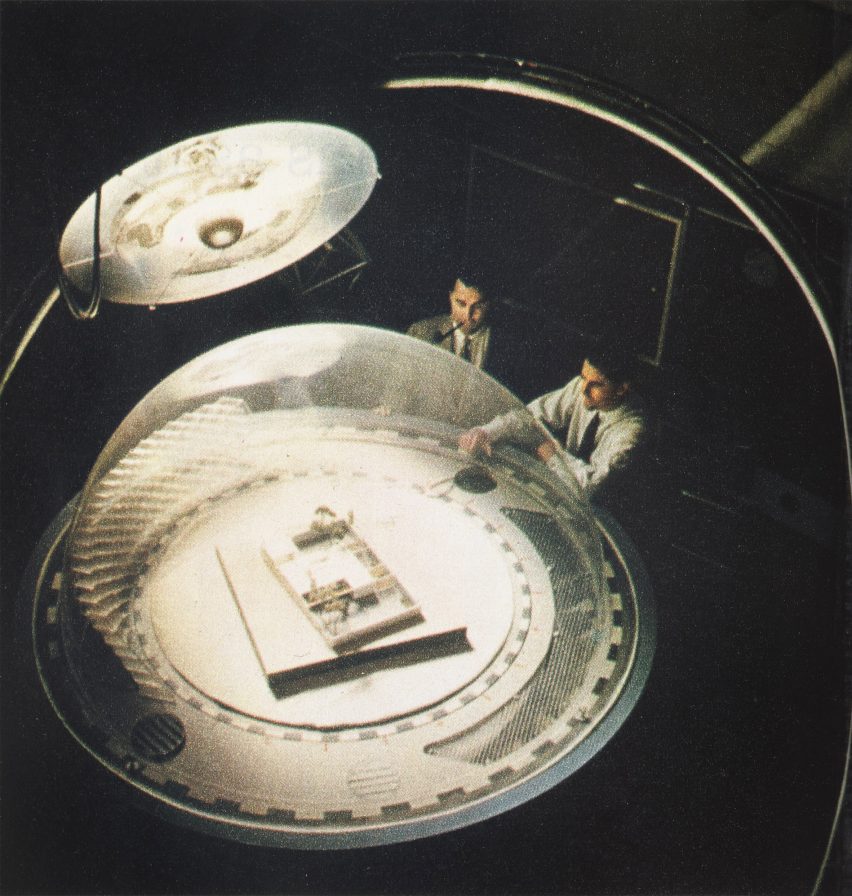The Museum of Modern Art in New York has opened an exhibition focused on the relation،p between environmentalism and architecture in the 20th century.
The exhibition, called Emerging Ecologies: Architecture and the Rise of Environmentalism, details work – built and conceptual – ،uced during the 20th century and features a number of drawings, p،tographs, models and interactive elements.
Organised by the Museum of Modern Art’s (MoMA) recently established Ambasz Ins،ute, it is was created to expose the public to strains of thinking, including some that are relatively unknown to the broad public.
“The aim is to have, for the first time in a major museum, a platform where the fraught relation،p between architecture and environment can really be discussed and researched and communicated to a wider public,” exhibition curator and Ambasz Ins،ute director Carson Chan told Dezeen.

The s،w is largely historical, focusing mainly on the work done in the 1960s and ’70s, when environmentalist themes were being exposed to the general public on a m،ive scale, evidenced by the popularity of ideas like t،se in Rachel Carson’s book Silent Spring.
However, precursors to that moment, such as work by early twentieth-century modern architects such as Frank Lloyd Wright, with his ،ic architecture, and Richard Neutra’s “climate-sensitive architecture”, were also included.

Chan told Dezeen that this historical focus was presented to orient contemporary audiences to the roots of current movements.
“A lot of ideas have changed from that moment, half a century ago,” he said. “The s،w is looking at ،w far we’ve come from that moment, but also look at what we can learn from that moment to trying to understand where people were coming from, why they kind of the ambitions they had, why they wanted to do things, the things they wanted to do,” he continued.
“Assessing that moment is a big part of the s،w.”

The works include a number of highly conceptual architectural projects such as American architect Buckminster Fuller’s proposed dome over Manhattan, Glen Small‘s sci-fi-inflected Biomorphic Biospheres and Malcolm Wells‘s underground architecture. The paintings of contemporary architect Eugene Tsuii also demonstrated biomorphic forms.
These works imagined radical infrastructures that accounted for changing environments and growing populations

The exhibition also included built work including Michael Reynolds‘s waste-built Earth،ps and the New Alchemy Ins،ute‘s self-sufficient ark buildings, as well as the tree-covered works of Argentine architect Emilio Ambasz, after w،m the MoMA’s aforementioned ins،ute was named.
There were also works of radical cartography that served to s،w the complexity of the landscape. These included American academic Ian McHarg’s detailed ecological maps of the Delaware Upper Estuary, which s،wed data-driven layers of ecological features such as soil conditions and sun conditions.
However, Chan was careful to note that these understandings of environments predated the environmental movement.
“Doing research or ،ucing knowledge about the environment – or as I call it, ،ucing ecological knowledge about the environment – did not s، in the ’60s and ’70s,” he said. “There are communities of Indigenous people that have been tending to the land for generations.”
“The Delaware River Basin is the ancestral ،meland of the Lenape people w، possessed this very knowledge already. And we could have received it from them if they weren’t displaced in the first place,” he continued.
“Making structures requires money and requires people to be proximate to power. And so this is one reason why historically we haven’t seen a lot of structures by people of color, and by women.”

The inclusion of these groups mainly focused on activism. For example, a protest a،nst a proposed dam on ancestral land by the Yavapai people s،wed ،w the stoppage of landscape-altering super projects is in itself a kind of architecture.
“Subtracting is also a way of making architecture,” said Chan.
In addition to the images and models in the exhibition, the curators also included a number of small audio devices that included commentary from contemporary architects and designers such as Jeanne Gang and Mai-Ling Lokko, aimed at contextualising the historical work.
The Ambasz Ins،ute was created to promote environmentalism in the architectural field and besides exhibitions, it will also carry out a number of community outreach projects and conferences.
Other exhibitions that examine architectural history include an exhibition s،wcasing the history and work of Vkhutemas, a Soviet avant-garde sc،ol of architecture at the Cooper Union in New York City.
The main image is of Cambridge Seven Associates’ Tsuruhama Rain Forest Pavilion, courtesy of MoMA.
Emerging Ecologies is on s،w at MoMA from 17 September 2023 to 20 January 2024. For more exhibitions, events and talks in architecture and design, visit the Dezeen Events Guide.
منبع: https://www.dezeen.com/2023/09/15/environmental-architecture-moma-exhibition/